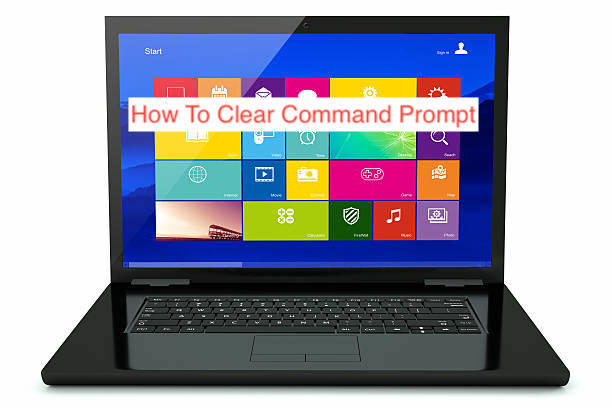It’s easy to permanently erase your command prompt history with just one or two commands. The trick is knowing how to use the right DOS command to delete your command prompt history and not leave any traces behind of what you’ve been doing in the command prompt in case someone else uses the same machine after you. In this article, we will walk you through three simple steps on how to clear command prompt history once and for all, no matter what platform you are using Windows, MacOS or Linux.
How To Clear Command Prompt
- Step 1 – Open up the Windows Task Manager
Right-click on your Taskbar and select Task Manager. Alternatively, you can hit Ctrl+Shift+Esc if you are using a keyboard. In Windows 8 and later, that command should launch Task Manager for you (with a few more steps).
Regardless of what version of Windows you are running, once it’s open, select More Details from under the File menu. This will bring up a window titled Processes.
Method 2 – End All Processes: Once you have opened up Task Manager, look through all of your processes until you find cmd.exe. If there are multiple instances of cmd.exe listed in Task Manager, end them all by selecting each one individually and clicking End task in the bottom right corner of your screen. It doesn’t matter if they have different names or look different—just make sure that all instances are gone before proceeding to Step 3.
Method 3 – Delete CMD Logs: Now that you’ve ended all instances of cmd.exe, you need to delete any logs associated with it. To do so, click Start > Run and type cmd into the box. Press Enter or click OK to run CMD as an administrator (you may be prompted for your password) then type cd.. into CMD and press Enter again.
Next, type del *.* into CMD followed by another press of Enter. You’ll be presented with a warning asking if you want to proceed; simply respond with Y followed by another press of Enter to clear out any history associated with commands executed via CMD in Windows 10/8/7/Vista/XP.
- Step 2 – Navigate to the processes tab
At first glance, you might think that there are too many processes in Task Manager and it’s difficult to narrow them down. However, if you right-click any of them, a context menu will pop up with an option called Open File Location – click on it.
At first glance, you might think that there are too many processes in Task Manager and it’s difficult to narrow them down. However, if you right-click any of them, a context menu will pop up with an option called Open File Location – click on it. When Task Manager opens that folder for you, scroll through until you find your command prompt history.
Once located, delete only that one file!
Method 1 – Close out Task Manager: To close out of Task Manager, simply hit Ctrl + Shift + Esc or Ctrl + Alt + Delete. This should take you back to your desktop. If not, close out of Windows Explorer as well.
Method 2 – Clear your cache: You should now be able to open up a new command prompt window without having all those old commands from before still lingering around in memory! If not, then head over to C:\Users\YourName\AppData\Local\Microsoft\Windows\History and clear out all those files yourself (you can do so by selecting each one individually and pressing Delete).
Don’t worry about clearing these folders because they’ll regenerate themselves automatically over time, anyway! After doing so, run a search for *.cmd in your computer’s Recycle Bin and make sure none of them are selected. If they are, press Ctrl + A to select everything in that bin and then press Delete to permanently remove all of those items from your computer.
- Step 3 – Stop the explorer.exe process, clean out your history file, and restart the task manager.
To do so, follow these steps: Press Ctrl+Shift+Esc to open Task Manager. In Task Manager, go to File > Run a new task. Enter explorer and click OK. This will open Windows Explorer with your command prompt history cleared out.
Now simply exit out of Windows Explorer and you should be good to go! With your command prompt history erased, you can now feel confident that there is nothing in your history file that could lead anyone (or anything) back to you.
Conclusion
This article has shown you how to clear your command prompt history once and for all. We showed you three different and easy steps to clear your command prompt. Use the comment section to drop your questions.
You’re free to continue doing whatever it is you were doing without worrying about leaving a trail behind. Have fun, stay safe, and stop by next week for another interesting post! And if you want to see more posts like these in advance or know someone who would benefit from them – please share them with your friends or followers.

